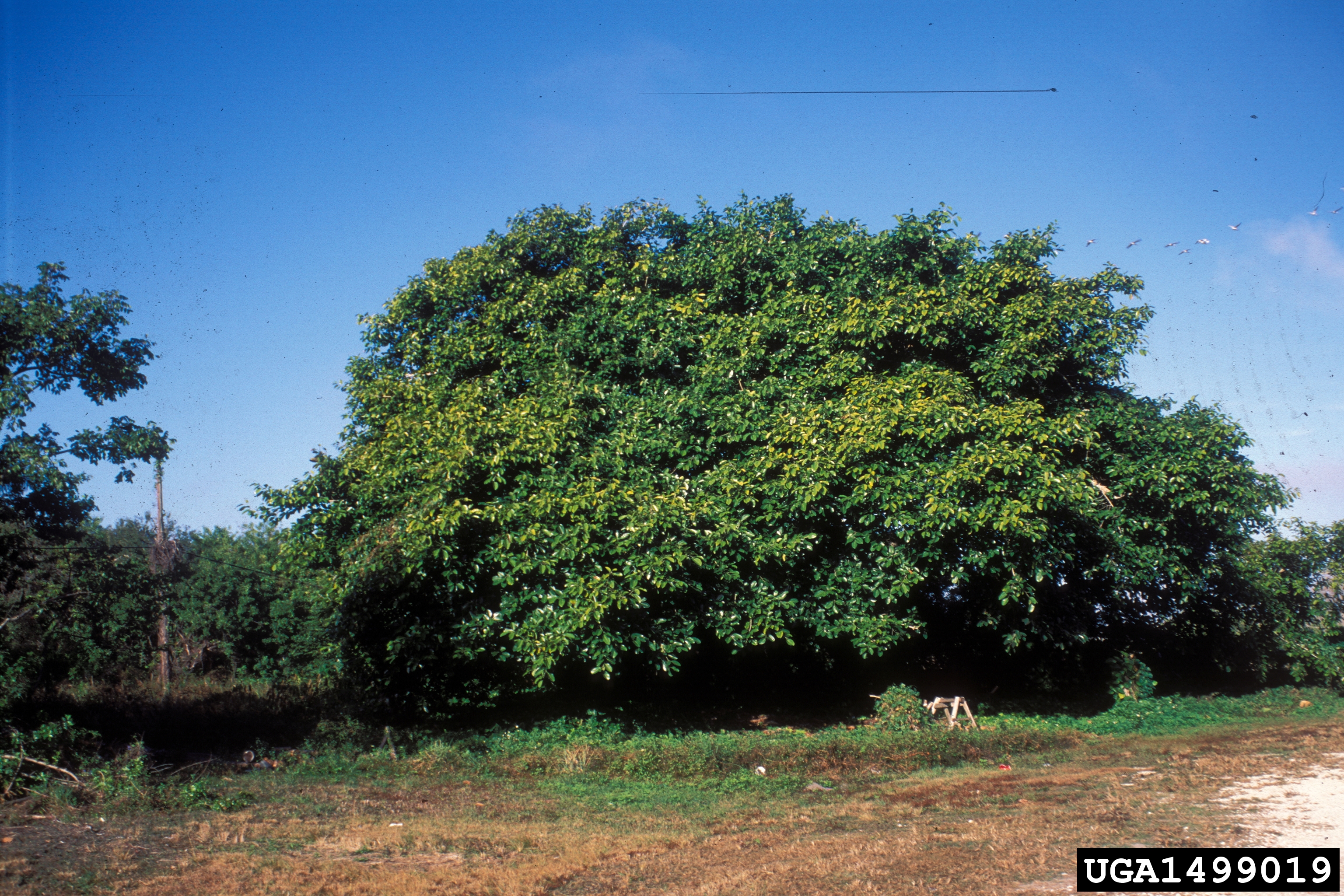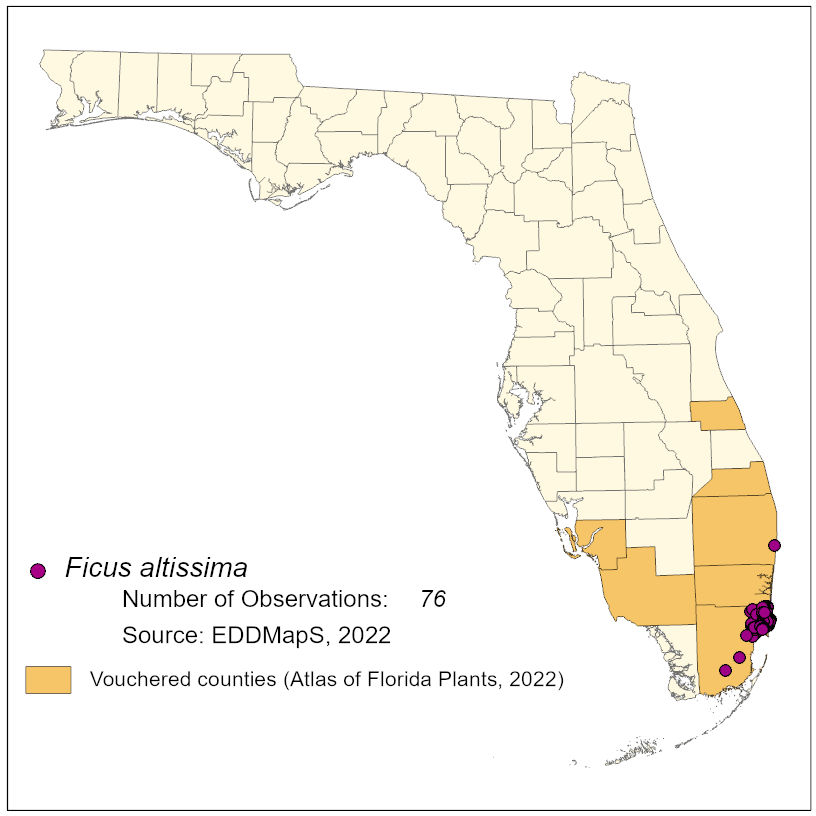Common Name: false banyan
Family: Moraceae
Common Synonyms: none
USDA Hardiness Zone: 9b-11
Growth Habit: Tree
Origin: Indian to south China and Malaysia
FISC Category: 2
FDACS Listed Noxious Weed: No
Introduction Date: 1913
IFAS Assessment:

"Evergreen, epiphytic, strangling shrub or tree to 25 m tall. Bark silvery and trunk often buttressed, with multiple trunks, and aerial roots. Leaves alternate, leathery, simple, glabrous, and glossy dark green to 20 cm, leaf tips rounded. Tiny flowers enclosed in the ""fig"", a specialized inflorescence. Fig is ovoid, glabrous, to 2 cm diameter, yellow to orange. "
Tropical hammock, mangrove swamp, scrub, pine rockland
Often found growing as epiphytes. Similar to the native strangler fig (Ficus aurea) but has larger ovate (rather than elliptic in F. aurea) leaves.

NA
Dave's Garden. 2014. PlantFiles: False Banyan, Ficus altissima. http://davesgarden.com/guides/pf/go/94277/. Accessed on June 20, 2014.
Langeland, K.A., H.M. Cherry, C.M. McCormick, K.C. Burks. 2008. Identification and Biology of Non-Native Plants in Florida's Natural Areas-Second Edition. IFAS Publication SP 257. University of Florida, Gainesville, Florida.
Langeland, K.A., J.A. Ferrell, B. Sellers, G.E. MacDonald, and R.K. Stocker. 2011. Integrated management of non-native plants in natural areas of Florida. EDIS publication SP 242. University of Florida, Gainesville, Florida.